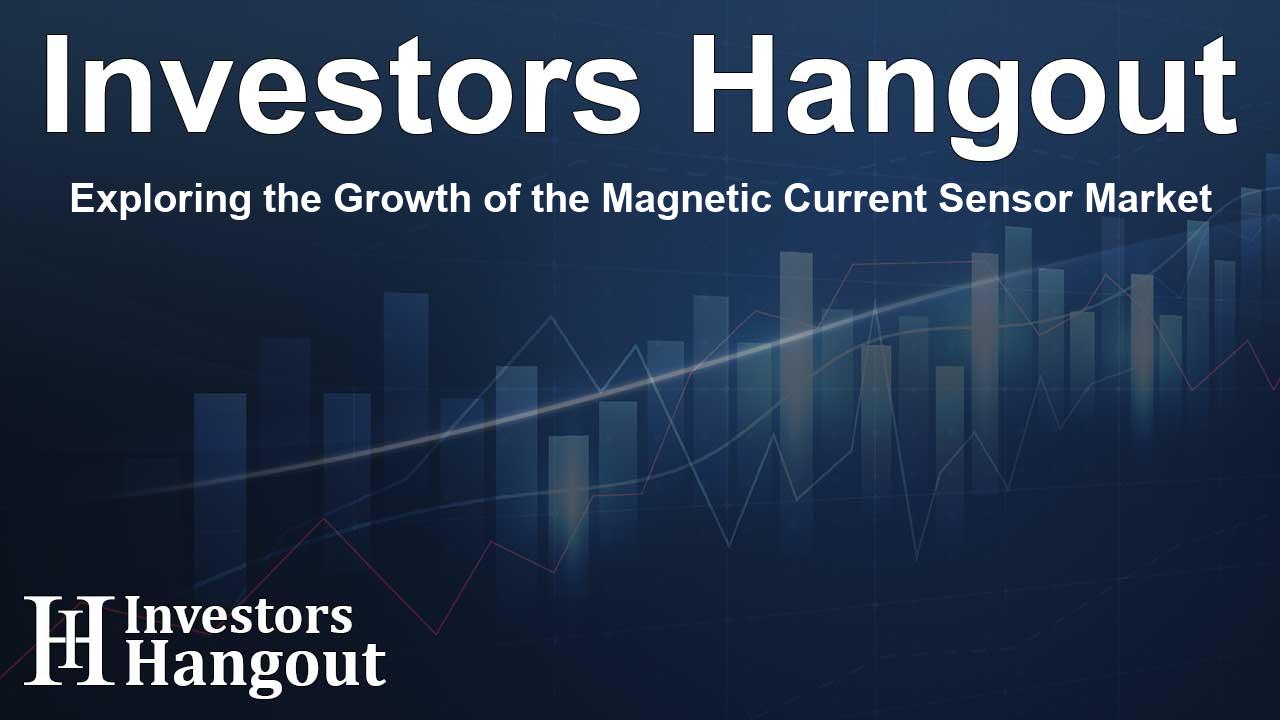Exploring the Growth of the Magnetic Current Sensor Market

Overview of the Magnetic Current Sensor Market
The magnetic current sensor market is on an upward trajectory, with projections indicating a significant growth from USD 1.98 billion to USD 3.51 billion by 2030. This represents a compound annual growth rate (CAGR) of 12.1%, highlighting the increasing adoption of hall-effect current sensors. These sensors are known for their versatility and cost-effectiveness, making them essential components in various applications, including electric vehicles, industrial automation, and consumer electronics.
Key Drivers of Market Growth
The primary factor driving this market is the rising demand for accurate, contactless current measurements. Hall-effect sensors excel in this area, providing reliable data while ensuring safety and system integrity. With a growing emphasis on real-time current monitoring across multiple industries, the market for these innovative sensors is expanding rapidly. Advancements in manufacturing, integration, and packaging technology have also fostered the development of compact and energy-efficient solutions.
Technological Advancements
One of the standout technologies in this market is magneto-resistive sensors. These devices are projected to grow at the fastest rate due to their exceptional sensitivity and low power consumption. Sensing technologies such as Anisotropic Magnetoresistance (AMR), Giant Magnetoresistance (GMR), and Tunnel Magnetoresistance (TMR) deliver precision that meets the demands of battery management systems and advanced consumer electronics. It's clear that consumers and manufacturers alike are leaning towards these advanced solutions, especially as the IoT landscape grows.
Automotive Sector Dominance
When analyzing market segments, the automotive industry stands out as the largest contributor. As the shift towards electric and hybrid vehicles accelerates, the need for precise current sensing has become paramount. Magnetic current sensors play a crucial role in battery management, power distribution, and onboard charging functions, ensuring efficiency and safety in high-voltage systems. The integration of advanced driver assistance systems in new vehicles further pushes the demand for reliable sensing solutions.
The Importance of the Asia Pacific Region
The Asia Pacific region is emerging as a powerhouse for the magnetic current sensor market. The combination of a robust industrial base, significant production of electric vehicles, and a commitment to renewable energy initiatives are key influencing factors. Countries such as China, Japan, South Korea, and India are driving this sector, providing a fertile ground for innovations and advancements. Furthermore, government support for clean technologies contributes to a favorable market environment.
Challenges and Opportunities
Despite the promising growth, challenges remain, particularly regarding the complexities of miniaturization and integration. Manufacturers are working tirelessly to address these issues, leveraging their expertise to offer more compact solutions without sacrificing performance. Simultaneously, opportunities for expansion in electric vehicle infrastructure and smart technology adoption present a thriving landscape for growth.
Key Market Players
Several companies are making waves in this market. Key players include Allegro MicroSystems, Inc., Infineon Technologies AG, TDK Corporation, and TAMURA Corporation. These organizations are recognized for their contributions to the development of magnetic current sensors that meet modern demands. Collaboration and competition among established players are vital in steering innovation and driving the market forward.
Frequently Asked Questions
What is driving the growth of the magnetic current sensor market?
The growth is primarily driven by the increasing demand for accurate current measurement solutions in various applications, especially in the automotive and industrial sectors.
Why are hall-effect sensors popular in the market?
Hall-effect sensors offer versatility, cost-effectiveness, and the capability to measure both AC and DC currents precisely, making them widely adopted across industries.
Which technologies are leading in the magnetic current sensor market?
Technologies like magneto-resistive sensors, particularly AMR, GMR, and TMR, are becoming increasingly popular due to their superior performance attributes.
How significant is the automotive industry's role in this market?
The automotive industry is the largest segment for magnetic current sensors due to the rising transition towards electric and hybrid technologies that require precise current management.
What are the geographical trends in this market?
The Asia Pacific region is dominated by the magnetic current sensor market, driven by industrial growth, electric vehicle production, and supportive government policies promoting green technologies.
About The Author
Contact Lucas Young privately here. Or send an email with ATTN: Lucas Young as the subject to contact@investorshangout.com.
About Investors Hangout
Investors Hangout is a leading online stock forum for financial discussion and learning, offering a wide range of free tools and resources. It draws in traders of all levels, who exchange market knowledge, investigate trading tactics, and keep an eye on industry developments in real time. Featuring financial articles, stock message boards, quotes, charts, company profiles, and live news updates. Through cooperative learning and a wealth of informational resources, it helps users from novices creating their first portfolios to experts honing their techniques. Join Investors Hangout today: https://investorshangout.com/
The content of this article is based on factual, publicly available information and does not represent legal, financial, or investment advice. Investors Hangout does not offer financial advice, and the author is not a licensed financial advisor. Consult a qualified advisor before making any financial or investment decisions based on this article. This article should not be considered advice to purchase, sell, or hold any securities or other investments. If any of the material provided here is inaccurate, please contact us for corrections.
